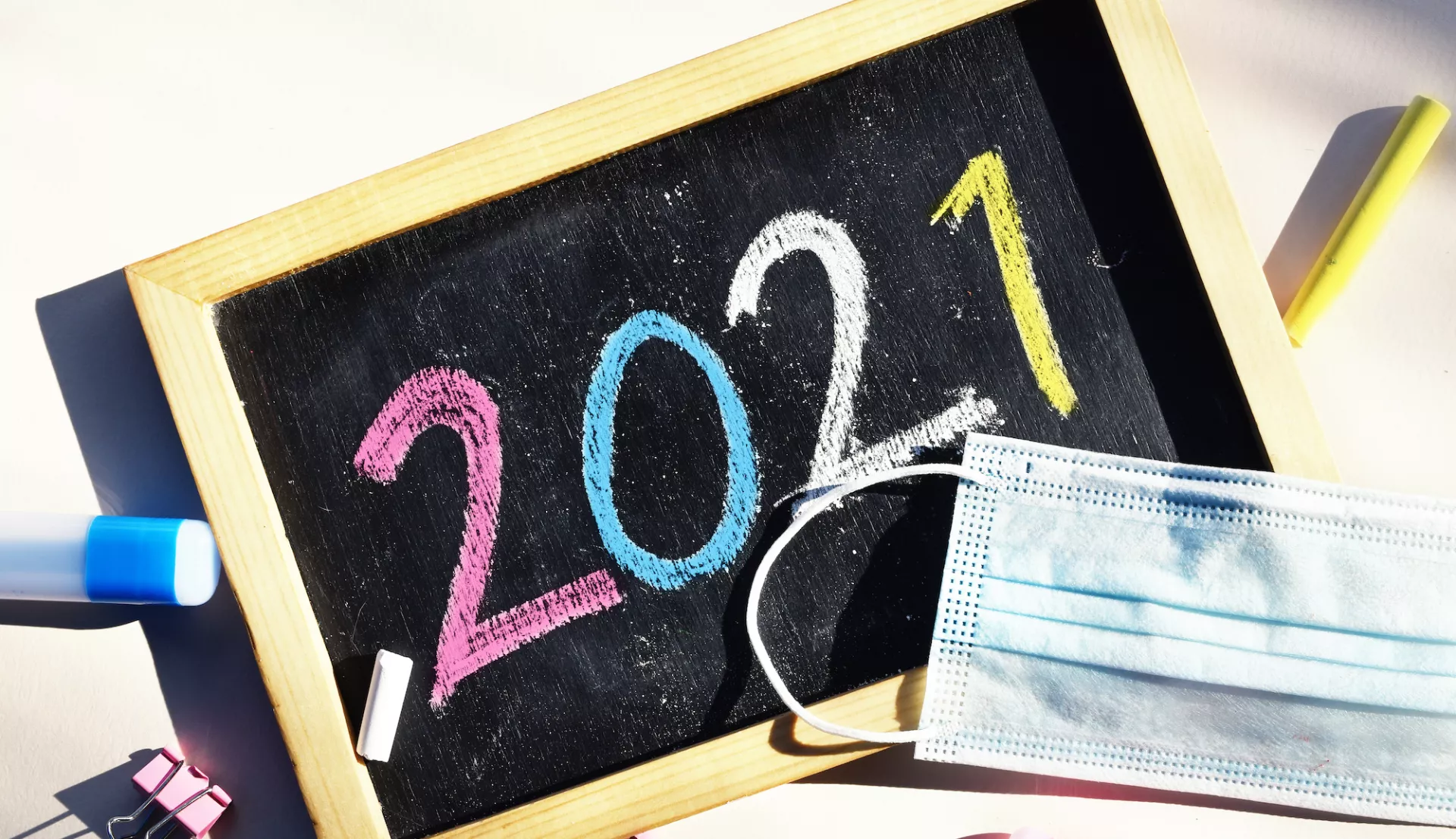It’s the start of a new school year, and it’s natural to feel a mixture of excitement and apprehension—especially in the wake of the COVID-19 pandemic. Whether this fall brings in-person or remote learning, or something in between, planning early can help set the tone for the rest of the year. To ensure that you and your students are both safe and successful—we’ve assembled a list of 12 helpful tips, classroom resources, and guidance to get your school year off to a great start.
Plan Ahead
Students are likely to feel different emotions on the first day of school, from happy and excited to worried and scared, so plan to get to know your students first. Find some fun games or icebreakers to kick off the day.
“Students want to get to know you. They want to get to know each other," says Anna Gonzalez, a middle school teacher in Ann Arbor Michigan. "They want everyone to know about them. Starting the year … with getting-to-know-you games and sharing will go a long way in building relationships with your students.”
What if your district decided to start the year with remote learning? We’ve got you: Scheduling small virtual “gatherings” is another excellent way to get to know your students. Try to meet with a handful of students to talk about their hopes for the rest of the year or their frustrations. Allowing them to express their thoughts and feelings builds trust and respect.
Get Organized
Trust that there will be forms, student work, permission slips—and more! No one solution will fit your organization style, but finding out what works best for you now could help save time later down the road. Maybe your secret to success is labeling binders with dividers inside or a filing system that’s not your backpack!
Take NEA’s quiz to help you identify your ideal system to get classroom clutter under control.
Design Your Classroom
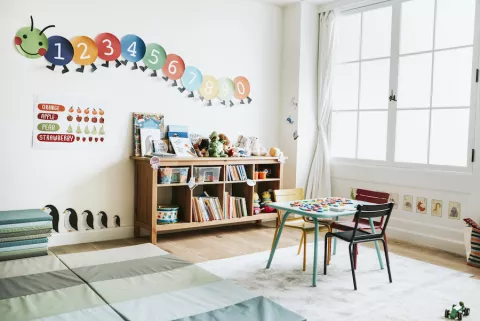
Paint an accent wall in your classroom (with permission, of course!). Or spruce up your student bulletin board by upcycling old, brightly colored T-shirts as the board’s background. Just stretch out the shirts and glue or pin them to the board. For more classroom decorating ideas, check out NEA Today on Instagram.
Establish a Classroom Culture
Update or create your list of classroom rules. Then discuss them with your students and get their buy-in. Establishing classroom routines is also a must-do. These should be posted somewhere in the room. You can use anchor charts or visual schedules to reinforce the information.
Your classroom norms and routines can translate into a virtual space, too. Establish norms for breakout rooms, and if you can’t say hello to students in a physical classroom, ask students to put a greeting in the chat.
Check out more ways to build routines in a virtual space, at nea.org/building-studentroutines.
Create Safe Learning Spaces
“No matter what school looks like when we reopen, social-emotional learning— not academics—should be the focus of the first 30 days of the school year,” says Wendy Turner, a second-grade teacher in Wilmington, Del.

For Aaron Kubo, a middle school history and social science teacher in Hilo, Hawaii, this means, learning students’ names—or preferred names— and pronouns.
“It means acknowledging [students] and ensuring they are being heard, because being invisible or ignored is one of those emotional triggers that impacts student learning,” Kubo says. To learn more about his students, Kubo asks them to write “I Am” poems or draw a favorite object or something that represents them. “We try to make close connections with the kids so they know they have at least one caring adult on campus that they can come to,” Kubo explains.
To find out more, check out the Welcoming Schools program, created by the Human Rights Campaign Foundation to promote inclusive school climates. Visit welcomingschools.org.
Keep Your Classroom Clean
Familiarize yourself with your school’s health and safety protocols as well as guidance from the Center for Disease Control and Prevention on how to maintain a healthy classroom environment.
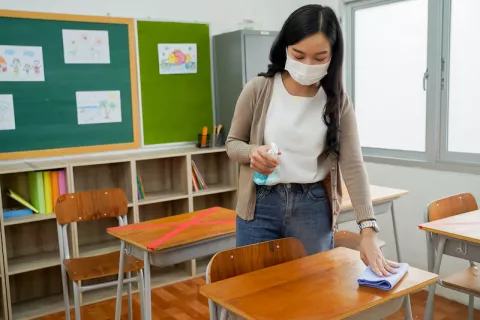
If your school requires social distancing, remove extra furniture to allow for more space between desks; create a seating chart and maintain the assigned seats; minimize movement; and add floor tape, signs, or other visual cues to keep students distanced while in the classroom.
And be sure to identify frequently touched or shared objects in the classroom (such as books, technology, and supplies) and increase cleaning and disinfecting between each use. NEA’s “Educating through Crisis” resources page offers additional tips for cleaning and disinfecting your classroom at nea.org/cleaning-and-disinfecting guidance.
Address Pandemic Trauma
The pandemic brought national attention to the inequities that hinder student learning, but these problems are not new to educators. It’s no secret that students struggle to learn when their families are homeless or in economic crisis. If you see students floundering as a result of anxiety, depression, trauma, or fear, there are ways you can help support them.

Some first steps include providing reassurance and validating students’ negative feelings. You can help them regulate their responses to those feelings through breathing and meditation activities or by practicing mindful listening.
School librarian Jill Scarcelli, of Troy, Ill., says it’s also important for students to socialize. “Pre-pandemic, I would structure every minute of the library experience trying to keep order,” she says. “Post-pandemic, I plan to allow time for scholars to interact … and give our students a safe place to be themselves and let them know they are special, unique, and fabulous the way they are.”
Watch NEA’s webinar “Supporting Students at Times of Crisis” to learn how to help students develop coping strategies.
Practice Self-Care Practice
“Educators are expected to help students through their trauma, but we’re not getting what we need for our trauma,” says Wendy Eccles, a middle school teacher in Jurupa Valley, Calif. “If we’re not good to ourselves, we’re no good for our students.”
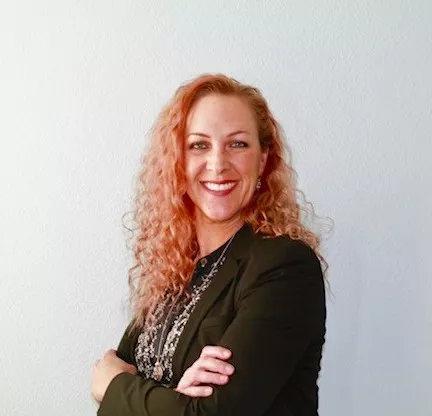
Administrators can establish practices that support the well-being of educators, too, suggests Sharon Hoover, a professor of child and adolescent psychiatry and co-director of the National Center for School Mental Health at the University of Maryland. “What do you do if you’re in a toxic environment? You can’t self-care yourself away [ from] that … and we can’t keep layering on to the teachers,” she says.
Questions to consider when assessing your school’s well-being supports include: Does your school support and help you realize your professional purpose? Is professional development offered, as well as adequate supervision and support? How diverse, equitable, and inclusive is your school? Is there shared decision making or does the principal call all the shots?
“It can feel hard … coming into a building to think, ‘how am I going to change anything,’” Hoover says. “But with a group of educators who could advocate for an assessment of organizational well-being support, that can feel more doable.“
Know Your Rights
As a school employee and union member, are you allowed to team up with other educators to negotiate your salary and benefits—a process called collective bargaining? How should you report a problem with a school administrator? What do you need to do if you require medical accommodation due to COVID-19 or other health issues?
Laws vary from state to state, but as an NEA member, you’re plugged into a network of knowledgeable people who can help answer these questions and many more. As you make your way through the first few weeks of this new year, get to know more about your local and state associations. Find out who your building representative, local president, and UniServ directors are (they may have changed since last year).
If you don’t know who the association members in your building are, your local association office can help. Learn more at nea.org/your-rights-workplace.
Get Professional Training
Did your career goals take a back seat during the pandemic? You are not alone. It’s a new school year and things are looking up, so now is the time to jumpstart your professional growth. Whether you’re a first-year educator or a 30- year veteran, NEA trainings can help you improve your practice and strengthen your leadership skills. Take the first step by checking out your association’s offerings.
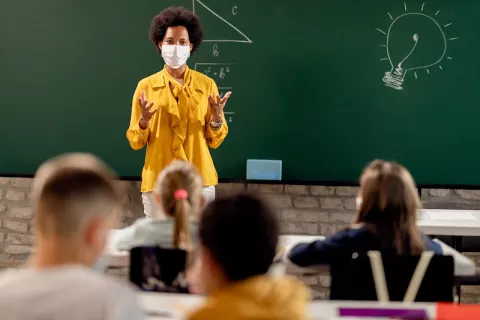
NEA’s Center for Great Public Schools offers programs such as Early Career Learning Labs—a blended learning environment focused on instructional and classroom problems of practice. The center also offers certification in NEA’s micro-credentials—online trainings in topics such as art integration, classroom management, and more. Visit nea.certificationbank.com.
Want to build your leadership skills? NEA offers trainings in seven competency domains for educators who want to lead on the local, state, and national stage. Go to nea.org/leadership-development.
Or tune in to NEA’s School Me podcast, where seasoned educators share their expertise on topics such as restorative justice, students with disabilities, and career tips for education support professionals. Listen at nea.org/schoolmepodcast.
Incorporate Rest and Relaxation

Let’s face it. Educators struggle when it comes to self-care. As you plan for a successful new school year, make sure to schedule some you-time. “Go on a good Netflix binge or read your favorite book,” says Lindsay Thompson, a high school English language and literature teacher in Fort Osage, Mo. “Exercise consistently to have an outlet and release some endorphins, whether it’s a long walk or bicycling, whatever your heart desires,” she advises.
Advocate For Your Colleagues and Students
Want to see better schools, higher salaries, and improved benefits for educators? NEA is one of the most powerful advocacy organizations for our students and schools.
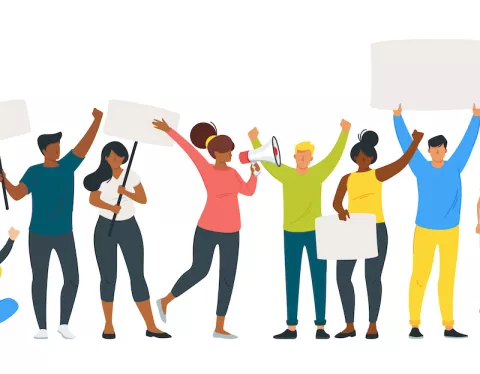
You can add your voice and be part of this important process. Invite others in your school to join you, too! Union representatives at the local, state, and national levels work tirelessly to support legislation that improves public education and defeat policies that harm our students.
Call your state government relations director or UniServ director and ask how you can help. Plus, get the latest news and find out about pro-public education candidates at educationvotes.nea.org.
